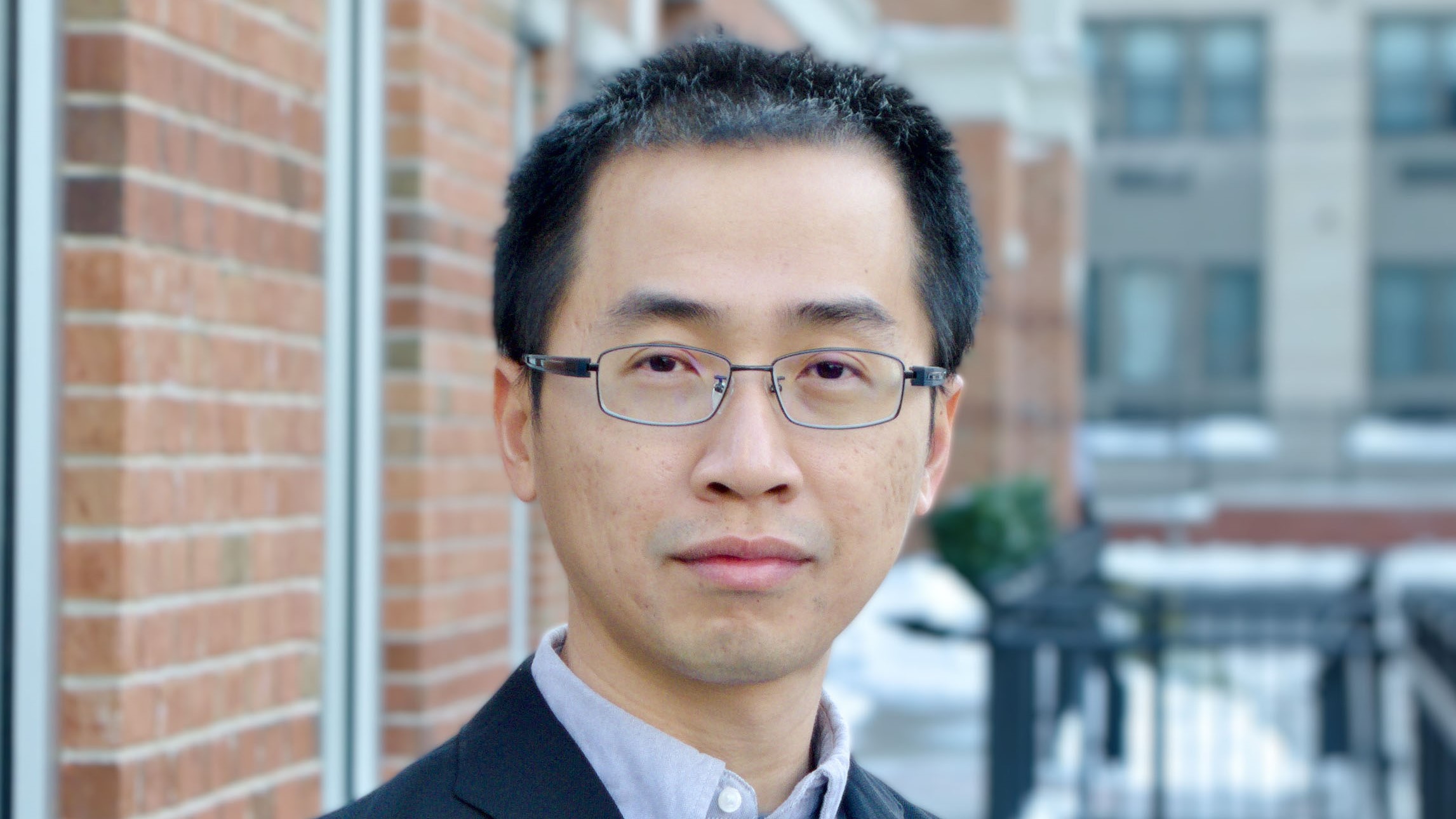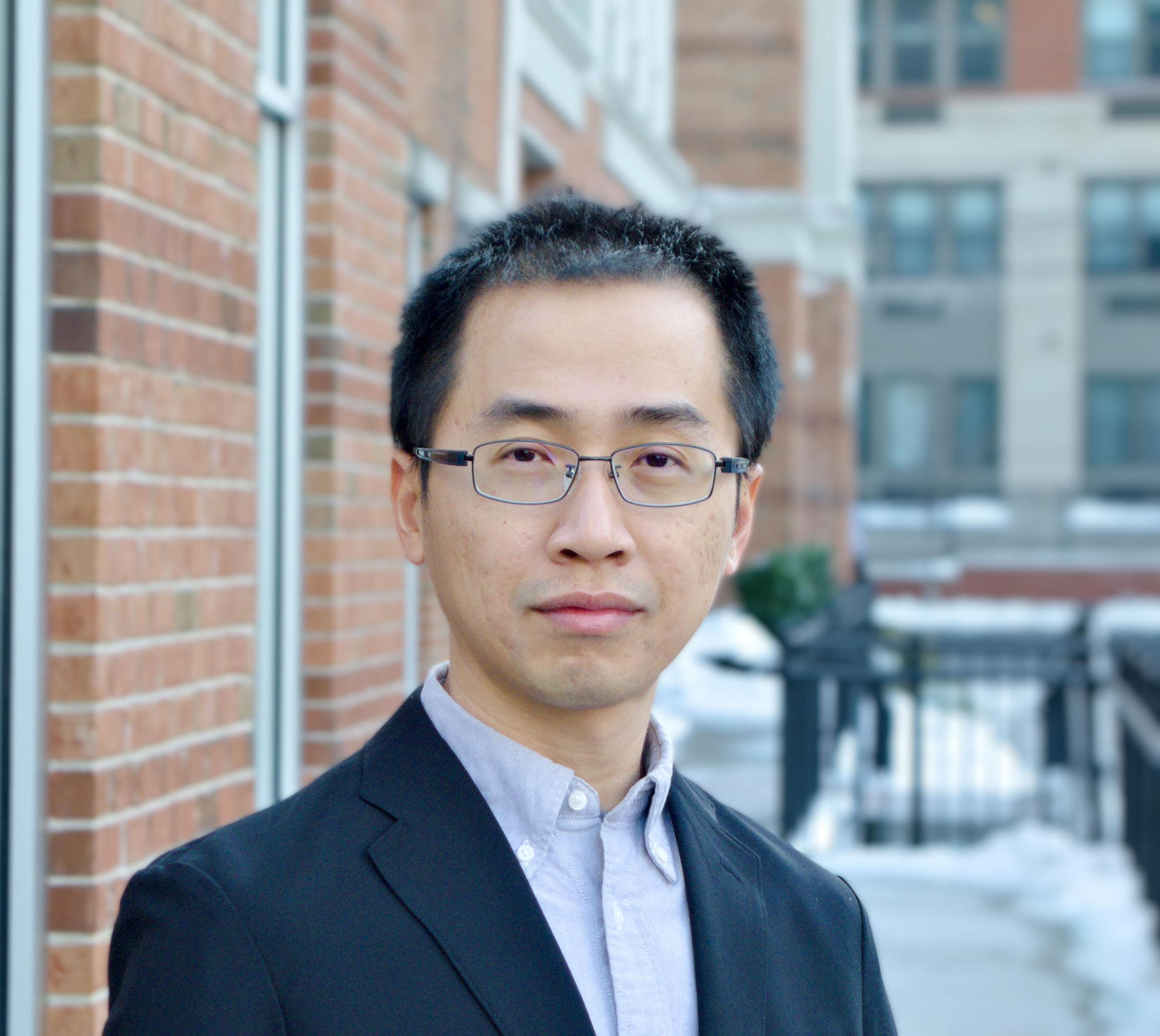Li-Cheng Tsai
Sloan Fellowship Recipient Joins Math Dept. in July

Li-Cheng Tsai
In July 2022, the Department of Mathematics will welcome Assistant Professor Li-Cheng Tsai to the U campus and Utah.
Tsai, who recently received a Sloan Research Fellowship, is currently teaching and doing research at Rutgers University, New Brunswick. The Sloan Fellowship is awarded to outstanding early-career researchers in scientific and technical fields. Tsai is one of 118 in the U.S. and Canada to receive the two-year fellowship from the Alfred P. Sloan Foundation.
“I’m deeply honored to receive this prestigious award,” said Tsai. “The fellowship will provide me with the resources to further my research, which I plan to continue in Utah.”
Tsai is looking forward to joining the U. “The Math Department has a really rich research portfolio, and the research directions of the probability group are well aligned with my own,” he said. “I look forward to fruitful interactions with my future colleagues in the department’s vibrant research environment.”
When he arrives in Utah, he’s also looking forward to hiking, and he’s recently learned stand-up paddle boarding. He’s confident he’ll enjoy the natural beauty that Utah offers.
Probability and stochastic analysis
Tsai’s research is about understanding unexpected universal patterns in stochastic systems. It turns out that systems that are random and governed by very different underlying rules can exhibit similar patterns. For example, consider two lists of numbers: the first list is the populations of U.S. counties. The second list is the height of the 1,000 tallest structures in the world in meters. These two lists of numbers should have nothing in common, but, surprisingly, the leading digit of each number follows the same distribution on both lists.
“One might think that maybe the distribution of the leading digit just follows a uniform distribution (where 1, 2, 3, … 9 all have the same frequency of occurrence) but that’s not the case,” said Tsai. In fact, the probability of the leading digit being 1 is about 30%, and the probability of being 9 is under 5%. This is known as Benford's Law, or the first-digit law, and it occurs in a wide range of data sets: bills, taxes, and stock prices to name a few. In fact, the pattern is so universal that it is used as a standard test to see if a data set has been manipulated.
 Tsai looks for these kinds of universal patterns, but in systems that are related
to rough interfaces, such as the edge of a coffee stain, the front of a burning paper,
or a randomly played tetris game. Despite having very different underlying physical mechanisms, the interfaces
in these systems all share the same statistical pattern, and the pattern defies the
standard law (or Guassian) in probability textbooks. This universal phenomenon was discovered in the 1980s
by physicists and has since grown into an active area of research in math and physics.
Tsai’s work focuses on developing and applying a strand of mathematical tools, called
stochastic analysis to understand the universal pattern in these systems.
Tsai looks for these kinds of universal patterns, but in systems that are related
to rough interfaces, such as the edge of a coffee stain, the front of a burning paper,
or a randomly played tetris game. Despite having very different underlying physical mechanisms, the interfaces
in these systems all share the same statistical pattern, and the pattern defies the
standard law (or Guassian) in probability textbooks. This universal phenomenon was discovered in the 1980s
by physicists and has since grown into an active area of research in math and physics.
Tsai’s work focuses on developing and applying a strand of mathematical tools, called
stochastic analysis to understand the universal pattern in these systems.
“I like this subject because it keeps me in contact with physics, my past academic interest, and because it touches on a wide spectrum of math,” he said. “For example, stochastic analysis and algebraic combinatorics are two very different kinds of math, sitting on the opposite ends of the spectrum, but both are very relevant to this subfield. My expertise lies in stochastic analysis, and it makes up the bulk of my research. At the same time, I have the opportunity to interact with and learn from experts in algebraic combinatorics. This kind of interaction is very stimulating. Some of my recent work made me stretch quite a distance from my math confront zone.”
Tsai's research in stochastic analysis is widely used in science and engineering, as well as in finance, such as tracking the evolution of stock prices.
Initial interest in physics
Before going to college, Tsai wasn’t terribly interested in math and planned to major in physics. That changed in his first year while taking a calculus class. His professor was passionate about calculus, taught interesting things about and beyond calculus, and always strived to inspire his students. “I still remember that he began the first lecture by shattering many of our math misconceptions,” said Tsai. After taking the class, Tsai became interested in mathematics. He received his bachelor's degree in physics, with a minor in mathematics, from the National Taiwan University.
After college, he applied to a research-training program at the Institute of Mathematics of Academia Sinica in Taipei City, Taiwan, and had a productive year under the mentorship of Professor Emeritus Tai-Ping Liu. Doing math research for a living had seemed kind of odd to Tsai, but his experience at Sinica made him more confident about this path. After the research training program, he decided to pursue a career in math research and applied to math Ph.D. programs. He received his Ph.D. degree in mathematics from Stanford University, working with Amir Dembo, the Marjorie Mhoon Fair Professor in Quantitative Science and Professor of Mathematics and Statistics. Dr. Dembo introduced Tsai to the subject of his current research. Tsai did post-doctoral research at Columbia University.
Other awards
In addition to receiving a Sloan Research Fellowship, Tsai has received other honors, including a 2020 Bernoulli Society New Researcher Award, which recognizes the work of outstanding young researchers in the fields of mathematical statistics and probability. Tsai was named a junior fellow of the Simons Society of Fellows from 2016 to 2019. Founded in 2014, the Simons Society of Fellows is a community of scholars that encourages intellectual interactions across disciplines and across research centers in the New York City area. During this fellowship, Tsai conducted research at Columbia University under the guidance of Professor Ivan Corwin.
Future research
Recently, Tsai has started to explore an aspect of stochastic systems called large deviations. Broadly speaking, the theory of large deviations is one of the pillars of probability theory, so understanding how it manifests in different stochastic systems becomes a meaningful and important task for mathematicians. He started to study the large deviations of rough interfaces and related systems a few years ago, and he’s been intrigued by their behavior, many of which remain conjectural and only partially understood. He hopes to contribute to furthering the understanding of this area of probability.
